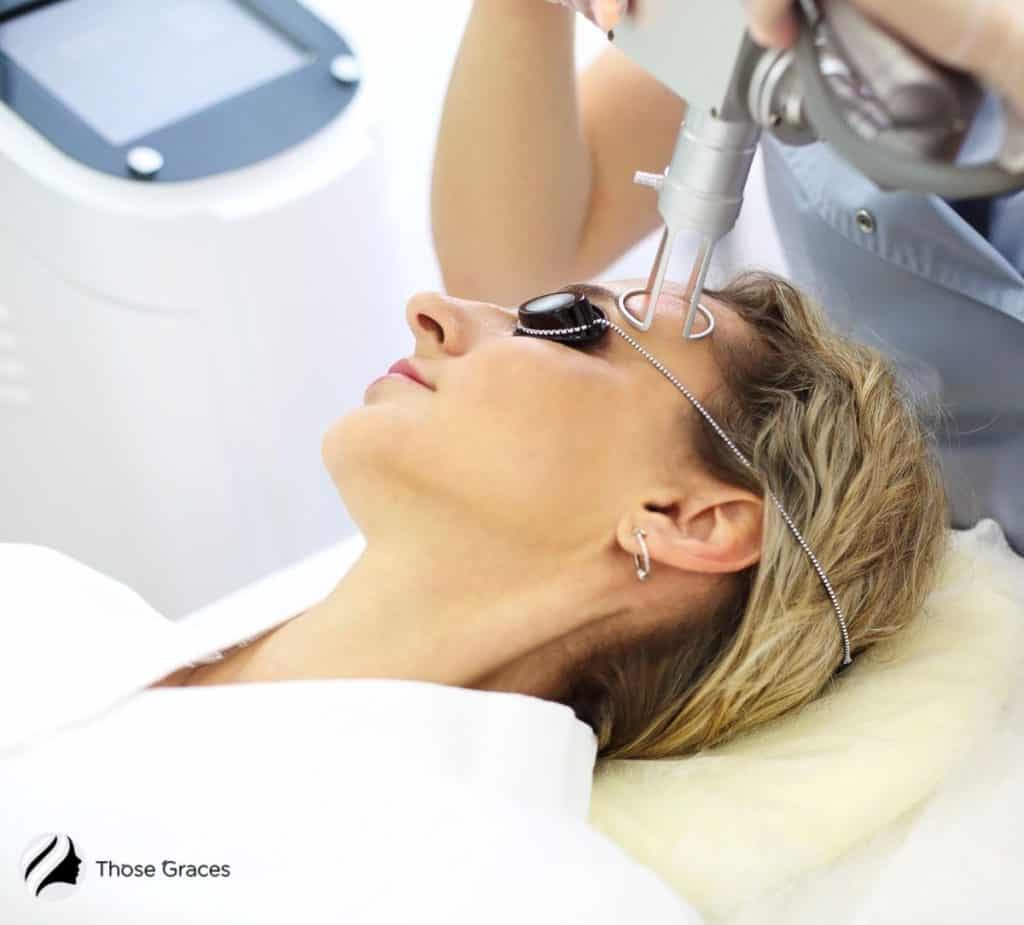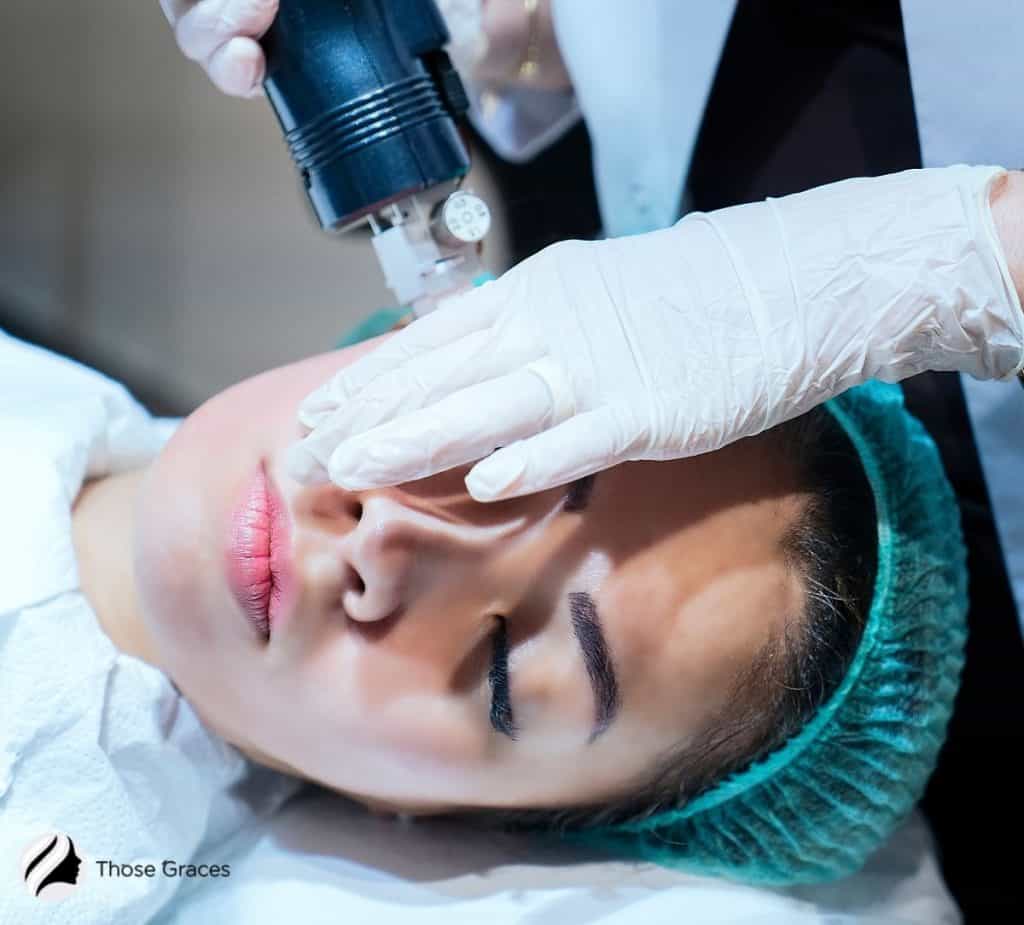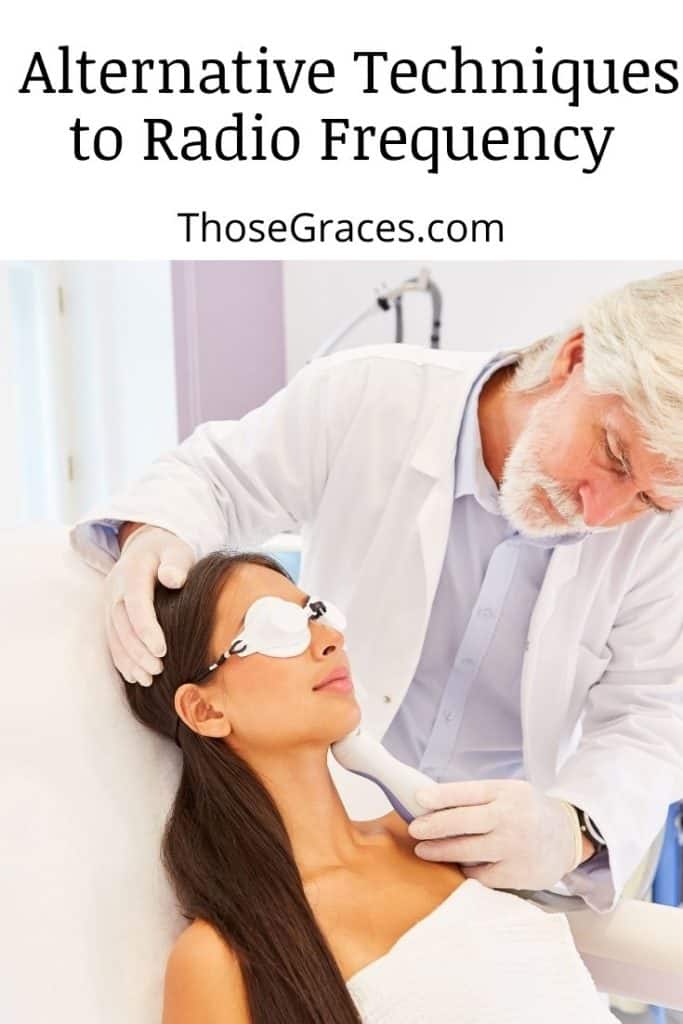If you’re looking for alternative techniques to RF, I’ve got you covered.
Radio Frequency skin tightening is incredibly popular, but it’s far from the only way to get younger-looking skin.
New technologies surface every single day, after all!
If you want to know about the alternative methods to RF that are currently trending, I’ll go over all of your best options below.
READ MORE: What is RF Skin Tightening?
Table of Contents
What Are Alternative Treatments to Radio Frequency?
The traditional method of Radio Frequency for skin tightening offered some solid results.
After all, there’s a reason this technique has been such a massive success for two decades now (it debuted in 2001).
However, like every cosmetic procedure has its own side effects, RF has a couple as well. Some of the common drawbacks of RF included temporary swelling, redness, tingling.
New techniques like Laser Resurfacing Treatment and Microneedle Radiofrequency are considered the latest and improved versions of our age-old RF.
If you are planning to get an RF treatment, check out these evolved alternative methods before you make a decision!
Laser Resurfacing Treatment

I personally think that Laser Resurfacing is an exceptional alternative to using a Radio Frequency skin tightening device.
This clinical practice basically offers the same effect as an RF treatment but with a slightly different approach.
Let’s dive deep into the world of Laser Resurfacing.
How Does Laser Resurfacing Treatment Work?
Laser resurfacing might be a great treatment to treat wrinkles and scars, to even out skin coloring (pigmentation), to tighten skin, and to remove lesions, both benign (non-cancerous) and malignant.
This method removes skin very precisely, layer by layer by vaporizing it. It may seem a bit extreme but what this technique actually does is remove the out layer called the epidermis and heats the underlying layer called the dermis.
When this dermis is heated it produces collagen which is great for skin tightening. The new healed layer of skin contains new collagen fibers resulting in the formation of new smooth and firm skin.
Who Should Go Through a Laser Resurfacing Treatment?
People with acne marks, uneven skin pigmentation, scarred skin or birthmarks, sun damage, fine lines and wrinkles on the face, age spots, and enlarged oil glands on the nose, are good candidates for this treatment.
Who Should Avoid a Laser Resurfacing Treatment?
If you have deep wrinkles, active acne breakouts, very dark skin, saggy skin. It’s best to not go through this treatment as it won’t be very effective.
How Much Does Resurfacing Treatment Cost?
The cost of a Laser resurfacing treatment drastically varies, from $200 to $6000.
It depends upon, the size of the treated area, number of sessions needed, targeted skin conditions, geographic center, and fees of the practitioner.
On average a resurfacing session will cost you about $1600. However, the major cost determining factor is the kind of laser you are opting for.
What Are the Side Effects of Resurfacing Treatment?
The very common side effects of a laser resurfacing treatment are redness, itchy skin during and after the treatment, swelling.
But occasionally, a session can also cause acne breakouts, infection, skin color change, scarring if the treatment is not carried out properly and eye-related issues.
Regardless, experts deem laser resurfacing a safe option compared to other skin tightening treatments.
Microneedle Radiofrequency

Microneedle Radiofrequency is a unique cosmetic procedure that makes use of needles and radiofrequency waves to get healthy smooth and glowing facial skin.
I believe this treatment may be a bit extreme for needle-fearing people. But if you are someone who would not mind having needles on your face. This might be the perfect treatment for you.
How Does Microneedle Radiofrequency Work?
This treatment is an amalgam of radiofrequency waves and skin puncture.
This method uses needles to create small channels in our skin and radio waves are passed through them. These needles damage the upper layer of the skin causing micro-wounds.
Plus, the transmitted heat through radiofrequency warms the inner layer of the skin, which results in the release of capillaries, elastin, and collagen.
This skin tightening and skin heeling hormones will heal the damaged skin. The newly formed skin layer will be tighter, smoother, and devoid of any type of scars.
Who Should Go Through a Laser Resurfacing Treatment?
If you are thinking of getting a Microneedle Radiofrequency treatment done you must have at least one of these; early signs of aging like a fine line, wrinkles, sun damage, pigmentation, pimple scars, or chickenpox marks, uneven skin, etc.
It’s important to know that it’s a cosmetic treatment that needs time to take effect and have realistic expectations from the treatment.
Who Should Avoid a Laser Resurfacing Treatment?
It’s best to avoid a radiofrequency Micronnedle session if you are pregnant, have a skin-diseases, have active acne breakouts, your skin does not heal well, you are going through chemotherapy or any radiation treatment, you have skin infections, and if you are taking anticoagulants.
How Much Does Microneedle Radiofrequency Cost?
On average one session of Microneedle Radiofrequency will cost you around $100 to $700.
However, like Laser Resurfacing, this technique needs multiple sessions as well. So, depending upon the number of sessions you opt for it may cost you somewhere in between $400 to $2800.
The overall cost may vary depending upon your location, targeted skin issues, and fees of the practitioner.
What Are the Side Effects of Microneedle Radiofrequency?
Considering the fact that Microneedling Radiofrequency is safe, but it’s still unsuitable for some individuals.
Some of the common side effects of this treatment are dryness, scarring, itchy skin during and immediately after the treatment, redness, acne breakouts, and cold sore breakouts.
Needlepoint bleeding is also one of the most common issues of this treatment. But for most patients, the wounds heal pretty quickly.
Which Treatment is Recommended?
If you are planning to pick one of the alternative methods from Laser Resurfacing and Microneedle Radiofrequency. Consider these four parameters to make a decision.
Everyone’s skin is different and it goes through different skin issues over time. So, it’s best to make a decision based on your own preferences.
In Terms of Procedure
Both treatments aim to remove the upper layers of the skin and trigger the secretion of collagen. Laser resurfacing is a little more subtle and only causes a tingling or itchy sensation on your skin.
On the other hand, Microneedle Radiofrequency uses needles, which usually draw a little blood on contact. And there is always a chance of infections through a needle.
In both treatments, a numbing cream or anesthesia is used, so you feel minimum pain.
In terms of Cost.
The cost of both the treatments depends upon the number of sittings you go through and some other variable factors. However, Microneedle Radiofrequency is a bit cheaper than Laser Resurfacing.
The costs of these treatments are high, due to the use of specialized radio frequency machines for face and body tightening and stomach skin tightening machine.
In Terms of Sessions
You need a minimum of three sessions of Laser resurfacing to see optimum results. But you could need more sessions too, depending upon your skin issue.
Each session is scheduled a month apart from the previous one. To let your skin fully recover.
In Microneedle Radiofrequency you need three to five sessions minimum, sometimes more to see the visible results.
The intervals between two consecutive sessions depend upon your skin’s response to the treatment.
FAQs
Is Microneedling with Radiofrequency better than regular Micro-needling?
This method has better results than regular micro-needling. So, a lot of experts believe Microneedling with Radiofrequency to be better than regular Micro-needling.
Does the skin look worse after Micro-needling?
However, that’s a rare case scenario. Yet, people complain that their skin looks flushed and red immediately after a micro-needling session. And it’s true, but the redness subsides in 24 to 48 hours and you can witness the expected glow after a micro-needling session.
When do you see results from RF Micro-needling?
But it vastly depends on the condition of your skin and which MNRF process you are undertaking. The intervals in between two consecutive MNRF sessions also count.
Is laser resurfacing permanent?
Is laser resurfacing painful?
Conclusion
These are the most popular and, in my opinion, best alternative techniques to RF. Of course, new methods of skin tightening pop up every day, and the next best thing is probably right around the corner.
I highly recommend talking to your dermatologist to find out which method is best for your skin and needs.
References
- Dr. T N Rekha Singh. 2020. “Fractional Radiofrequency Microneedling: Benefits and Cost.” Oliva Skin & Hair Care Clinics. Oliva Clinic. November 19, 2020. https://www.olivaclinic.com/blog/everything-need-know-about-radiofrequency-microneedling/.
- Mary Anne Dunkin. 2010. “Laser Skin Resurfacing.” WebMD. WebMD. January 12, 2010. https://www.webmd.com/beauty/laser-skin-resurfacing#1.
- Nunez, Kirsten. 2021. “All about Radiofrequency Microneedling.” Healthline. Healthline Media. January 20, 2021. https://www.healthline.com/health/radiofrequency-microneedling#about.
- Osborne-Spencer, Michelle. 2021. “The Pros and Cons of RF Microneedling Treatment.” Aboutfaceandbodykaty.com. About Face & Body Medical Spa. April 14, 2021. https://aboutfaceandbodykaty.com/med-spa-blog/the-pros-and-cons-of-rf-microneedling-treatment.
- Yetman, Daniel. 2020. “What Is Radiofrequency Skin Tightening?” Healthline. Healthline Media. July 17, 2020. https://www.healthline.com/health/beauty-skin-care/radio-frequency-skin-tightening#cost.

For you, what are the best alternative techniques to RF? Let us know in the comments below!



